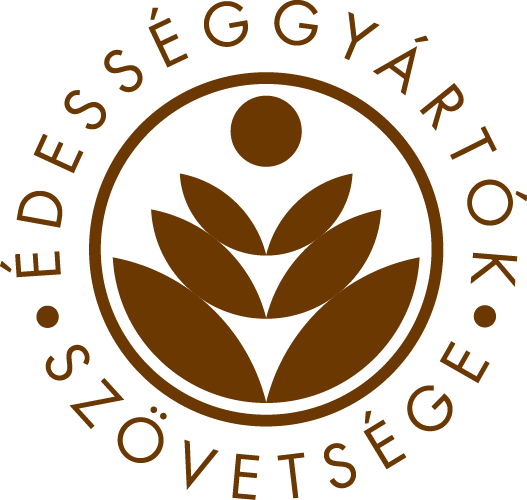The Association of Hungarian Confectionery Manufacturers timed its pre-Easter roundtable discussion to coincide with the spring equinox – but the situation in the confectionery market is far from so balanced.
Last year’s inflation bite also left a deep mark on the confectionery market. While the soaring prices pushed the market size in excess of HUF 381 billion with an annual growth of 23 percent, consumption in terms of tonnes declined significantly in almost all product categories, said Sándor Sánta, president of the Association of Hungarian Confectionery Manufacturers. Last year, a total of 109,000 tonnes of sweets were purchased, 5.8 percent less than the year before, but the decline was significantly higher in almost all product segments, with ice creams and sponge cakes, for example, falling by over 8 percent. At the other end of the scale, chocolate bars and chocolate snack bars fell by 1.3 and 0.3 per cent respectively, thus the latest figures again show that chocolate is the hardest to give up for consumers.
At the same time, 2023 was the first year in which Easter sales fell in all product categories without exception, albeit by widely varying degrees, from 1 to 18 percent. A total of 1,000 tonnes of Easter bunnies and eggs, i.e. hollow chocolate figures, were purchased at a value of HUF 10 billion, 5.6 percent less than the year before.
Weather phenomena stir up cocoa
In addition to domestic inflation, global economic, social and environmental factors have also contributed and will continue to have a major impact in the period ahead. Cocoa, sugar and cereals are among the most important raw materials in the confectionery industry, and their quality and careful processing are crucial to the texture and taste of the products – but their producers face severe challenges.
The three largest producers of cocoa beans are Côte d’Ivoire, Ghana and Indonesia, while the largest supplier of premium cocoa is Ecuador. The crop’s environmental requirements mean that production areas are geographically limited and the market is highly concentrated on the supply side, with the two African countries accounting for nearly 60 percent of global cocoa supply. However, the cocoa fields in Côte d’Ivoire are drying out due to warmer and drier than average weather and the passage of the Harmattan trade winds through the country. Thus the African country has been able to release nearly 40 per cent less cocoa beans than the average yield to the global market, leading to a price explosion – the commodity price of cocoa beans per tonne has risen by 400 per cent in a year, scaling to USD 7,000 in January this year.
The Association of Chocolate, Biscuit and Confectionery Industries of Europe (CAOBISCO) reports that world cocoa bean producers have been unable to meet demand for the past five years and that, unfortunately, the shortage is expected to grow even more in the coming years. In addition to climate change, El Nino and other weather events, as well as pest infestations, the situation is exacerbated by the fact that small farmers in Africa are working inefficiently on fragmented land, in plantations that are suffering from youth exodus, and are therefore achieving lower yields. At the same time, in Asia in particular, a growing middle class with greater purchasing power is demanding sweets, further widening the abyss between supply and demand and threatening to make cocoa even more expensive.
Manufacturers are looking for a way out through innovation
Brazil is the largest producer of sugar, another important raw material, and the European Union accounts for 20 percent of world production. CAOBISCO forecasts that global sugar production in the 2023/24 season could reach 178.4 million tonnes, close to the record production of 180 million tonnes two seasons ago. However, as the world population continues to grow, so does sugar consumption, which could push sugar prices up despite a good harvest.
In the EU, for example, which can produce only 50 percent of its own sugar from sugar beets- the other half from cane and beet sugar imports – the price of white sugar per tonne has risen by 80 percent in the course of just a few months. Much higher sugar prices than in other parts of the world reduce the competitiveness of the high value-added products of local confectioners, increase inflation and have a negative impact on the EU’s economy and trade balance.
The domestic confectionery and sugar industry therefore recommends to the forthcoming Hungarian EU Presidency the initiative of European sugar recultivation, the development of sugar beet cultivation and the sugar industry, and the liberalisation of sugar imports to ensure a smooth supply of sugar for food production.
Beáta Olga Felkai, Deputy State Secretary of the Ministry of Agriculture, also provided an overview of the agricultural priorities of the Hungarian EU Presidency and the expected support at the roundtable discussion. Among the key challenges facing the sector, the Deputy State Secretary also highlighted the need to ensure adequate supply of raw materials, as well as to increase competitiveness with the necessary digitalisation and modernisation, as well as the need to to increase energy efficiency and achieve sustainability goals.
The Ministry of Agriculture will help the industry respond with new grants under the KAP Strategic Plan, which will be open for biweekly applications in June and November 2024. Among other things, the scheme will provide opportunities for the development of other types of value-added farms for agricultural products and for the purchase of renewable energy equipment, including a power plant, with a production capacity that exceeds the energy needs of the place of consumption.
In addition to further improving their energy efficiency and productivity, confectionery manufacturers are also innovating in response to market challenges and other trends, said Sándor Sánta. While they are not changing the tried and tested recipes of their most popular products, the examples of Mars, Hershey and Nestlé show that manufacturers are reducing the weight of some of their products by bubbling, making them partially coated instead of fully coated, and replacing cocoa butter with peanut butter or palm oil. The use of whole grains and natural flavourings and colourings is also increasing, with the global market for the latter set to exceed USD 14 billion by 2028.
However, it would be difficult to predict how retail sales of sweets will unfold this Easter or especially during the much more significant Christmas season domestically. As Ferenc Németh, commercial director of Tutti Food Ltd. pointed out, the impact of the commodity exchange on consumer prices is reflected with a time lag. In order to ensure an uninterrupted supply of raw materials, manufacturers purchase the necessary quantities for a longer period, up to six months in advance, so that for this year’s chocolate Santas they will use the cocoa they bought at the current inflated price.
About the Association of Hungarian Confectionery Manufacturers
Founded in 1992, with 24 current members, the Association of Hungarian Confectionery Manufacturers (MÉSZ) is the ambassador of the producers of quality confectionery to be consumed with pleasure and moderation. The Association engages in dialogue with the public and decision-makers and represents the interests of the sector in Hungary and in the Union. Its aim is to create a supportive and competitive environment for the Hungarian confectionery industry. It stands for fair taxation, correct regulation, skilled workforce and high quality education. Website: https://www.hunbisco.hu/
For further information please contact:
Gábor Intődy
Association of Hungarian Confectionery Manufacturers
sec.gen@hunbisco.hu
+36 70 359 6989

